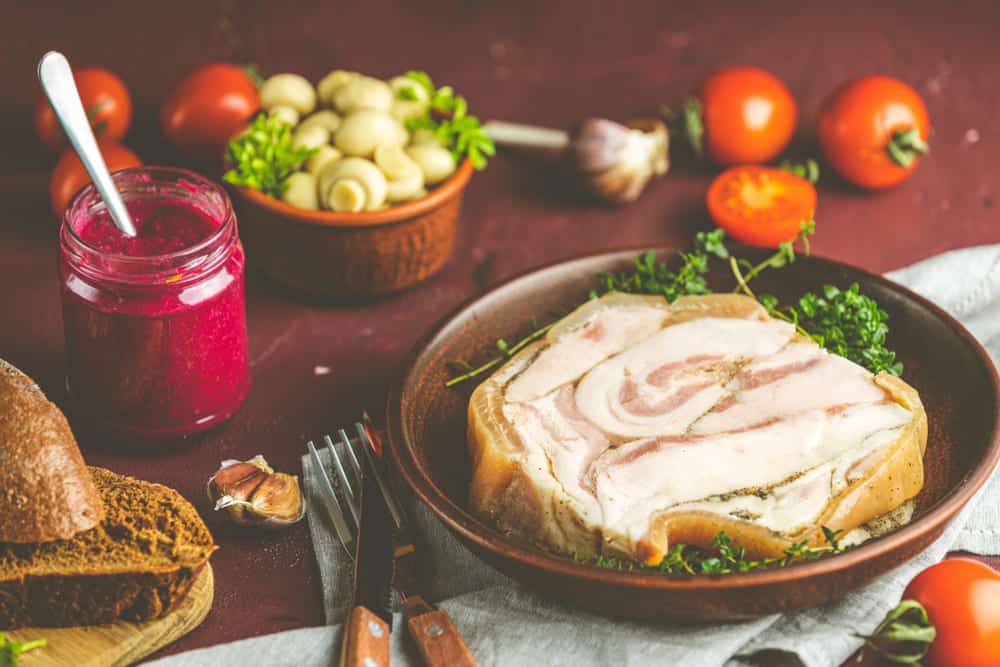
Be it bacon or sausages, pork meat has become the ultimate meat form for people. Likewise, there are various cuts of pig meat, such as salt pork and fatback. Generally, they are used for seasoning vegetables and soups, but some people use them for dried beans as well. On the contrary, people don’t know much about them, so we have added salt pork Vs. Fatback information in this article!
Salt Pork vs Fatback
Fatback
To begin with, fatback is pure fat, which is usually cured (dry as well as wet). This is usually the pork slice from under the back of the pig. If the fatback is used without curing, it enhances the juiciness and flavor. The uncured fatback is usually used in pork sausage or ground beef. For instance, it has thin slices and is used in the lard. However, some people wrap these thin slices to wrap other meat.
Even more, it is considered hard fat. When added to dishes, fatback can enhance the flavor. However, when it’s cured with herbs and sea salt, its taste will be delicious on its own. As far as the application of fatback is concerned, there are various ways. For instance, it can be finely grounded or cut into small pieces for different purposes.
With this being said, fatback can be used in the preparation of pate, sausages, and charcuterie. As a result, the flavor and richness of the food will be enhanced. Some people also use the fatback strips for adding them to the leaner meat that helps with taste and moisture as well. On top of everything, it can be rendered as an ingredient in pastry (in terms of cooking medium).
The fatback makes an amazing appetizer since it’s sliced and cured. Then, it is whipped with salt and seasoned with herbs and roasted garlic, making the delicious appetizer. Given its ability to add juiciness to the food, fatback is extensively used in stuffing, meatloaf, and burgers. However, it must be used in a moderate amount to make sure food doesn’t shrink since there is higher water content.
If we talk about the appearance, it has a solid form at room temperature, but it can be ground and chopped when you freeze or chill them. The experts suggest that you freeze the fatback pieces in food after chilling them for around half an hour. As for the taste, it’s a combination of greasiness and salty and has a natural crunch.
Salt Pork
Salt pork is the meat cut of the pig, which is more on the meatier side. Salt pork is often defined as the fat, which is either wet-cured in brine or dry-cured in salt. This fat can be cut out from the belly, sides, or back. The salt pork is actually made by coating the pork with sugar and salt mixture. Just like fatback, salt pork can be used for flavoring as well, but the seasonings will variate.
In addition, some people say that fatback is salted and cured, which transforms it into the fatback. It is responsible for enhancing shelf life. When it comes down to southern cooking, salt pork makes an essential ingredient since it helps add juiciness and flavor. The salt pork is optimal for the green dishes. In addition to the fatback, it can be made from pork belly as well.
The salt pork looks a lot like uncut bacon (yes, the slab bacon), but it can be pretty fattier since it’s cut out from the lower belly part. Similarly, the curing is usually performed for a long time and tends to be stronger. Also, keep in mind that it is never smoked for curing purposes. Salt pork is extensively used in pork and beans, greens baked beans, and American cuisine in particular.
Usually, people blanch it before using, and it can be used in veggies (that are cooked in water) for adding flavor. In case there is an immense meat amount with salt pork, it will look a lot like the side bacon. Also, salt pork is extensively used in fish chowder. On the contrary, salt pork has various saltiness degrees, but if the saltiness is too much for you, you can always blanch!
